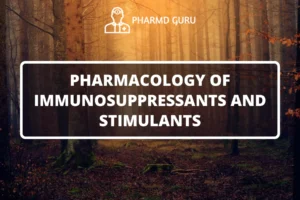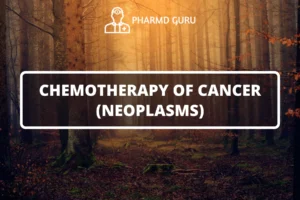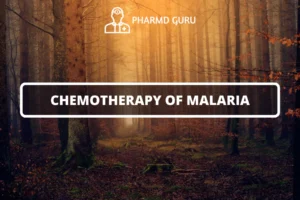CHEMOTHERAPY OF PROTOZOAL INFECTIONS (AMOEBIASIS, GIARDIASIS)
Protozoal infections are caused by microscopic single-celled organisms known as protozoa. Two common protozoal infections that affect humans are amoebiasis and giardiasis. Chemotherapy plays a crucial role in the treatment of these infections, offering effective drugs that target the protozoa and help alleviate the associated symptoms. In this article, we will explore the chemotherapy options available for amoebiasis and giardiasis, including the drugs used, treatment protocols, potential side effects, and the importance of early diagnosis and treatment.
SCROLL DOWN TO THE BOTTOM OF THIS PAGE FOR ACTUAL NOTES.
TABLE OF CONTENTS:
- Introduction
- Amoebiasis: Overview and Treatment
- Giardiasis: Overview and Treatment
- Commonly Used Drugs for Amoebiasis and Giardiasis
- Potential Side Effects
- Prevention Strategies
Introduction
Protozoal infections such as amoebiasis and giardiasis are caused by specific protozoa and commonly affect the gastrointestinal tract. These infections can lead to symptoms such as diarrhea, abdominal pain, and discomfort. Chemotherapy, through the use of specific drugs, plays a vital role in eliminating the protozoa and treating the associated symptoms.
Amoebiasis: Overview and Treatment
Amoebiasis is caused by the protozoan parasite Entamoeba histolytica. It is typically transmitted through the ingestion of contaminated food or water. In some cases, the parasite can invade the intestinal wall, leading to severe complications such as liver abscesses. Chemotherapy for amoebiasis involves the use of drugs to eliminate the parasite and reduce the symptoms. Commonly used drugs include metronidazole, tinidazole, and paromomycin.
Giardiasis: Overview and Treatment
Giardiasis is caused by the protozoan parasite Giardia lamblia. It is a common cause of gastrointestinal illness worldwide, particularly in areas with inadequate sanitation. The infection is typically acquired through the ingestion of contaminated water or food. Chemotherapy for giardiasis aims to eradicate the parasite and alleviate the associated symptoms. The drugs commonly used for giardiasis treatment include metronidazole, tinidazole, and nitazoxanide.
Commonly Used Drugs for Amoebiasis and Giardiasis
- Metronidazole: Metronidazole is an antiprotozoal drug that is effective against both Entamoeba histolytica and Giardia lamblia. It works by damaging the DNA of the protozoa, leading to their death.
- Tinidazole: Tinidazole is another antiprotozoal drug used for the treatment of amoebiasis and giardiasis. It has a similar mechanism of action to metronidazole and is effective in eradicating the parasites.
- Paromomycin: Paromomycin is an aminoglycoside antibiotic that is specifically used for the treatment of amoebiasis. It works by inhibiting protein synthesis in the protozoa, leading to their elimination.
- Nitazoxanide: Nitazoxanide is primarily used for the treatment of giardiasis. It interferes with the energy metabolism of the parasite, resulting in its death.
Potential Side Effects
Like any medication, the drugs used in the chemotherapy of amoebiasis and giardiasis can cause side effects. Common side effects include gastrointestinal symptoms such as nausea, vomiting, and abdominal discomfort. Headache, dizziness, and allergic reactions may also occur. It is essential to consult a healthcare provider if any side effects are experienced.
Prevention Strategies
Preventing protozoal infections involves adopting proper hygiene practices and ensuring the safety of food and water sources. Some preventive measures include:
- Drinking clean, treated water from reliable sources.
- Washing hands thoroughly with soap and clean water before eating or preparing food.
- Avoiding the consumption of raw or undercooked food.
- Maintaining good personal hygiene and sanitation practices.
ACTUAL NOTES:




